CAC’s 25th annual Juried show stimulating push to keep nonprofit alive

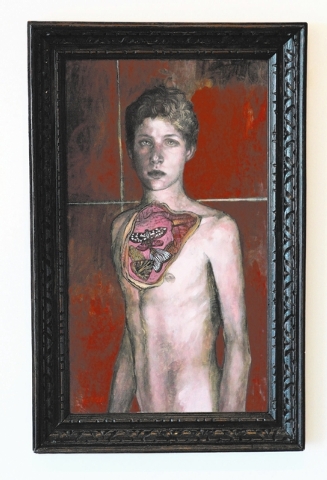

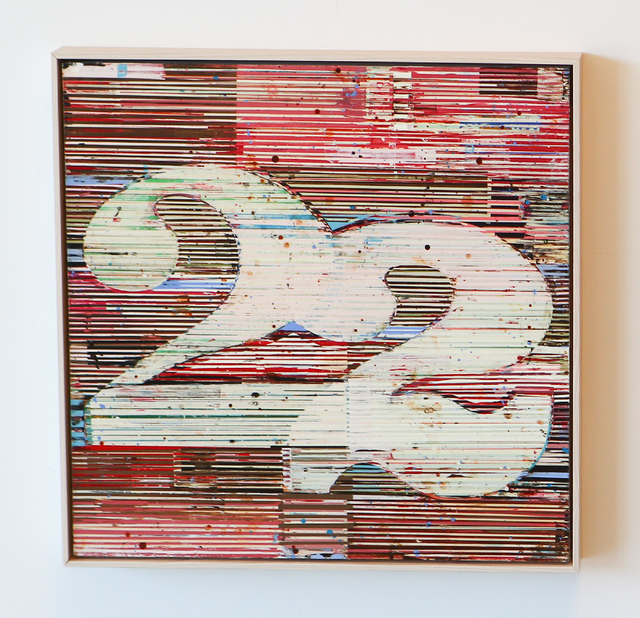
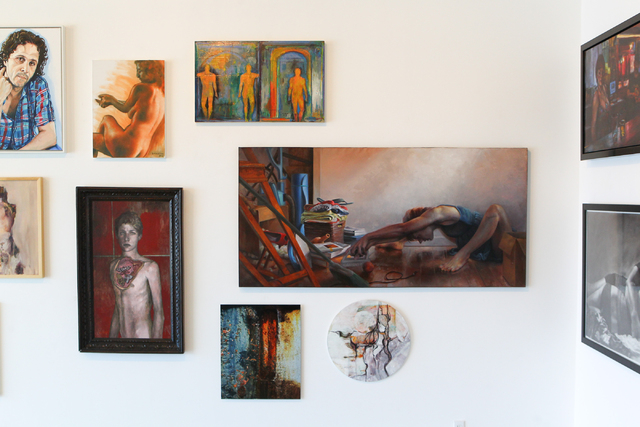

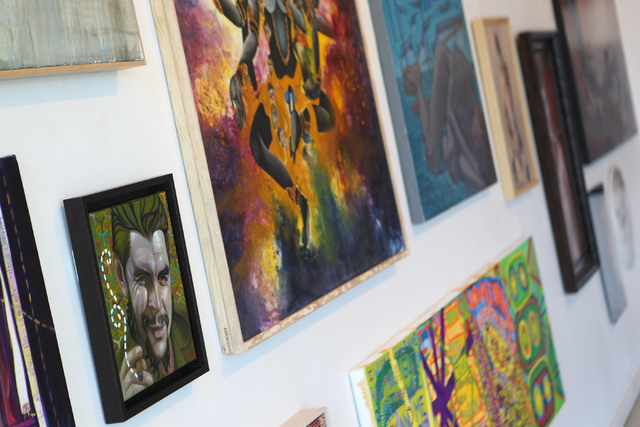

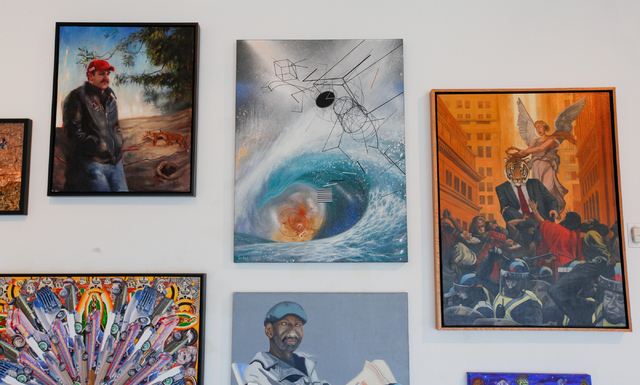


When the Contemporary Arts Center announced its 25th Annual Juried Show, the nonprofit group also announced something else: its demise.
But, to paraphrase something Mark Twain once wrote, reports of CAC’s demise have been exaggerated.
Juror John Seed, a Southern California-based art historian and writer, selected 36 works from the more than 300 submissions by artists from Las Vegas and beyond to make up the exhibit, which continues through April 27 at CAC’s temporary downtown space.
“The installation looked amazing and the salon-style stacking of works added to the show’s feeling of energy and eclecticism,” Seed blogged on Huffington Post, where he’s a regular contributor. “That is just what I wanted the show to feel like: a big loose conversation between contrasting works and approaches.”
The works range from portraits to abstracts. Some serve up social commentary, such as Tom Wegrzynowski’s “Triumph of the Masters,” which depicts an angel crowning a business-suited tiger surrounded by an adoring throng. (“Tiger of Wall Street,” anyone?)
Others offer glimmering geometrics, from Eric Vozzola’s “New Car, Caviar, Four Star Daydream” to Jeremy Humbert’s equally car-centric “Lowrider” collage, with is kaleidoscope of Chevys (and more Chevys) radiating outward from a central figure: Our Lady of Guadalupe.
Seed chose Caitlin Karolczak’s “Between My Chest” — depicting a young man with (literal) butterflies inside — for the show’s top honors, praising its “quality of empathy” that enables it to “evoke emotion from the viewer.”
Other winners included Kim Fohsin’s “22: Two Swans in One” (a fitting second-place winner Seed described as “spellbinding”); Margaret McCann’s “exceptionally beautiful” third-place “Water Country”; Las Vegas local Lolita Develay’s “Same Cloth,” an honorable mention Seed praised for its “pearlescent beauty” and “impossible to paint” subject matter (a tailor’s window, its sharp suits split by a cascade of scissors); and Serena Potter’s honorable-mention “Ojo,” a “tender” charcoal of a sleeping couple.
The current juried show may be CAC’s final exhibit — for now.
But when it comes time for its 26th annual juried show, CAC intends to be around, according to a plan designed to keep one of Southern Nevada’s oldest arts organizations on life support — and return it to viability.
CAC board members voted in late March to dissolve the group (founded in 1989), citing lack of funding and a changing arts climate.
“We never wanted CAC to close,” says co-president Aurore Giguet, the group’s exhibition committee chair, whose “day job” is program director at UNLV’s Barrick Museum. “But we needed people to wake up and pay attention.”
One of those people was self-described “community activist,” and CAC patron, Melissa Petersen, who’s leading the save-the-CAC effort — and will take over as CAC president following Tuesday’s board vote to accept her group’s plan.
As “a strong arts patron” with “a deep love and appreciation of art,” Petersen has supported CAC in the past — often anonymously.
But news of the group’s imminent disappearing act inspired her to set aside her penchant for privacy and seek support from past and current board members, along with fellow patrons, to tap “a collection of institutional knowledge” to save the nonprofit organization.
The proposal’s first phase calls for “board development, community development and community outreach,” she says. “There should always be a fundraising component.”
Once “we have a highly functioning board,” the group’s next step would be “a pop-up phase, doing CAC programs in temporary spaces,” she continues. CAC would remain in temporary spaces until the organization’s finances improve to the point where “a special committee will look at the viability of a new gallery.”
Petersen says she expects the revival efforts to take months, not years, expressing hope that the pop-up programming would begin by the end of the year.
And “the juried show will go on,” she vows. “That’s already in the planning stage.”
With six months of rent-free downtown space coming to an end, CAC officials had no choice but to act, according to co-president Michele Quinn, who owns MCQ Fine Art, a downtown advisory and collection management firm that also presents exhibitions.
“The reality is, since October, we’ve been in a very tenuous position,” Quinn says. “We were hesitantly planning forward, without knowing what our abilities would be.” But when a promised donation fell through, “that put the writing on the wall.”
Indeed, art collector and philanthropist Patrick Duffy hosted a CAC fundraiser at his home a few months ago “and about five people showed up,” he says.
Duffy, president of the Las Vegas Art Museum — which closed in 2009 and in 2012 found a new home for its collection at UNLV’s Barrick Museum — has been down this road, too.
And despite its financial difficulties, the CAC is “a stellar institution — all of their passions are in the right place,” says Duffy, who oversaw the art component for last year’s Life Is Beautiful festival downtown.
“With the same strategy, if you’d plop it down in New York, San Francisco or Chicago,” it would succeed, he suggests, but Las Vegas “needs to be spoon-fed” when it comes to the visual arts, he contends — which is why he encouraged the board to keep CAC alive.
CAC “had a long history of being unable to pay the rent” at its previous location in the downtown Arts Factory, Giguet concedes. But the nonprofit group made several recent attempts to shore up its finances, including a “$25 for 25” fundraising campaign.
“We haven’t been sitting here waiting for the phone to ring,” Quinn says, adding that “an artist-run collective is all well and good, but you have to pay the bills.”
Despite its difficulties, CAC has played a vital role in Las Vegas’ arts community, Petersen maintains.
For one thing, the CAC “really helped spark some of the downtown revitalization,” she points out, citing that it was “one of the first groups to move downtown — when downtown was scary.”
In addition, its nonprofit status makes it a haven “for artists to experiment in a safe place,” Petersen says.
And “the ability to show the work without having to worry about selling the work,” Quinn says, sparks “a whole different level of creativity.”
Las Vegas may be “a great arts community,” Duffy says, but “it’s primarily a performing arts community” — which explains why 37 pieces from the Las Vegas Art Museum’s collection are on display at The Smith Center for the Performing Arts.
Those may be “baby steps,” he concedes, but “let’s start those baby steps and see if we can make big boy and big girl steps.”
Contact reporter Carol Cling at ccling@reviewjournal.com or 702-383-0272.
Preview
CAC 25th Annual Juried Show
Contemporary Arts Center at Alios, 1217 S. Main St.
2-5 p.m. Thursdays and Fridays, noon to 6 p.m. Saturdays (and by appointment), through April 25
Free, donations accepted (702-496-0569, www.lasvegascac.org)


















